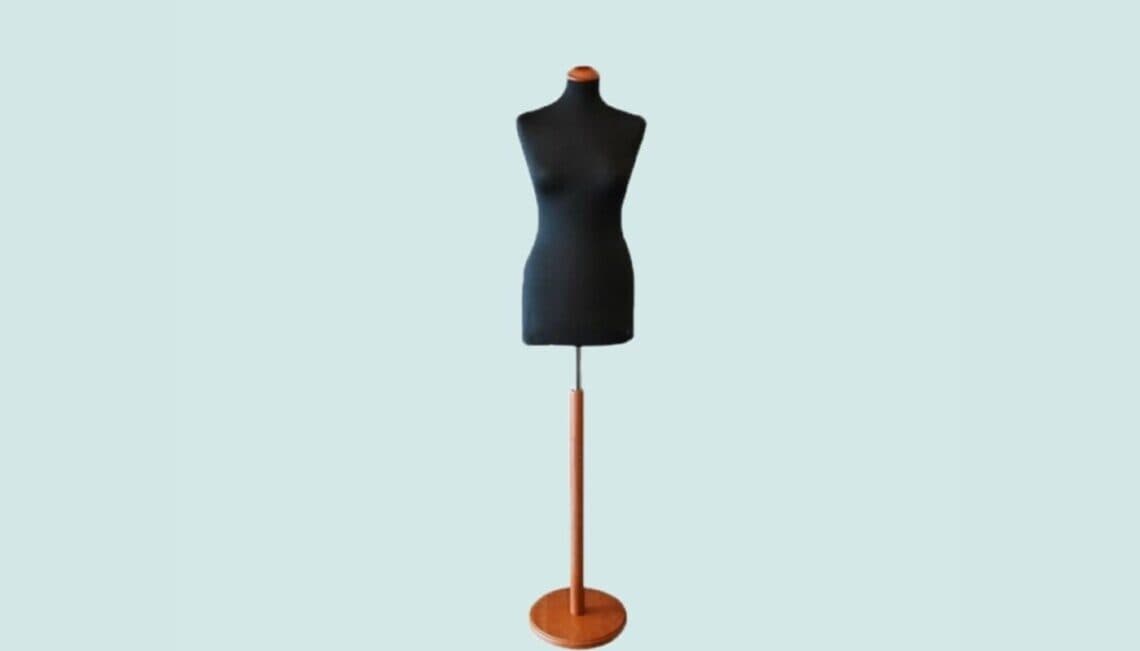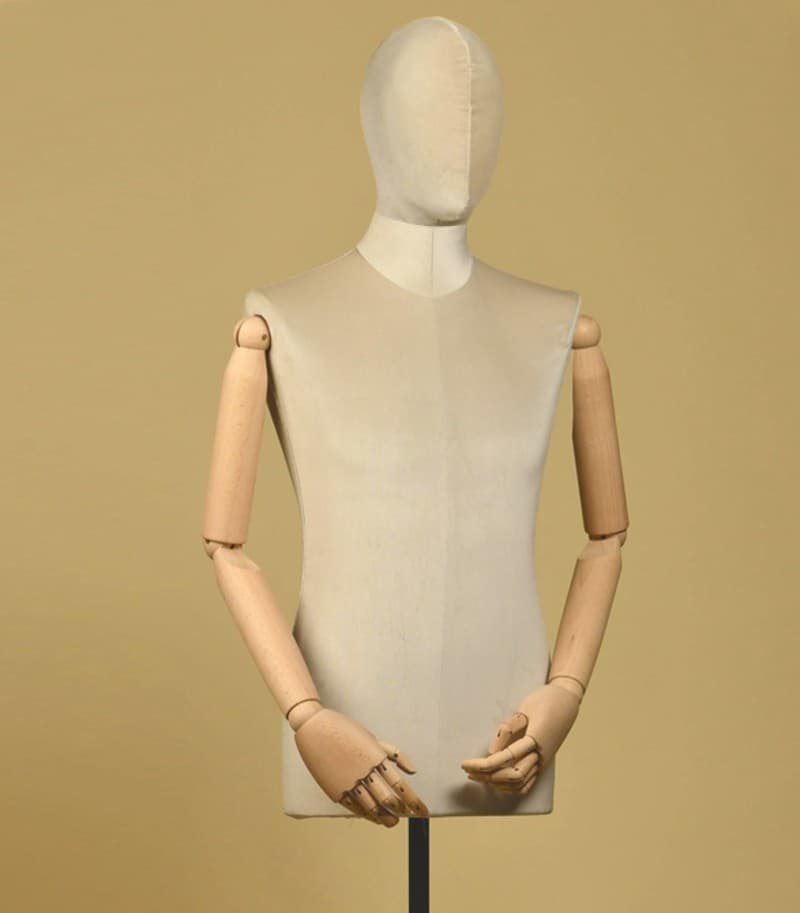
Mannequin
The term Mannequin comes from the French, where the word is also used to refer to the models themselves. Originally, it comes from the Dutch word mannaken, diminutive of the German, man, to signify a little man, in other words a puppet or doll. Indeed, in its first incarnation in the eighteenth century, it was a doll, dressed in a miniature version of contemporary fashions. These mannequins, which in Venice were called “piavole di Franza,” were sent in elegant boxes from Paris to the different European capitals, even as far as the Russian court.

The true mannequin, born in the 1800s
The true mannequin is a support used to make clothing. It was born in the nineteenth century. Initially made out of willow reeds, it was later stuffed in order to simulate the female bust and the male torso. Fixed on a tripod of black wood, it was present for a long time in every tailor’s atelier until it began to be replaced, though not everywhere, by mass production or more precise cutting techniques. The term mannequin also refers to shop dummies, made of solid wax, equipped with a head, arms, and legs rather than just a torso, used in window displays.
Originally expressionless and decidedly unnatural, they now possess an unsettling “hyper-realism,” so much so that they act as a “trompe l’oeil” next to posed models in “life” presentations. Mannequins, often from Japan, are made to fit historic costumes. They provide an interesting indication of changes in stature and the human body over the course of the centuries.
You may also like:

Mammini

